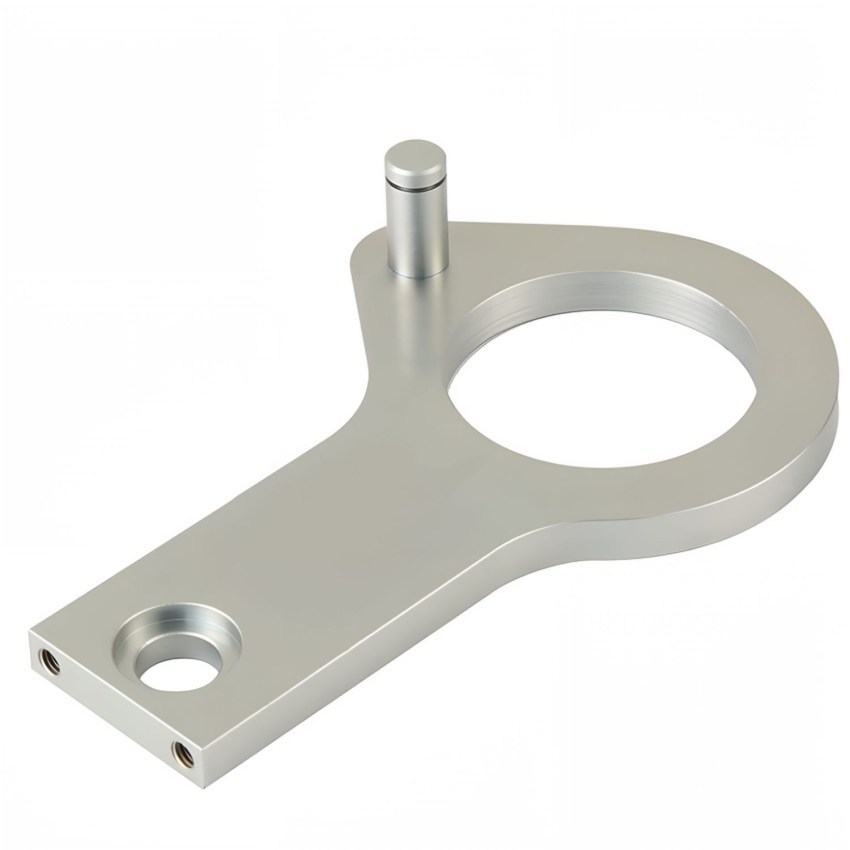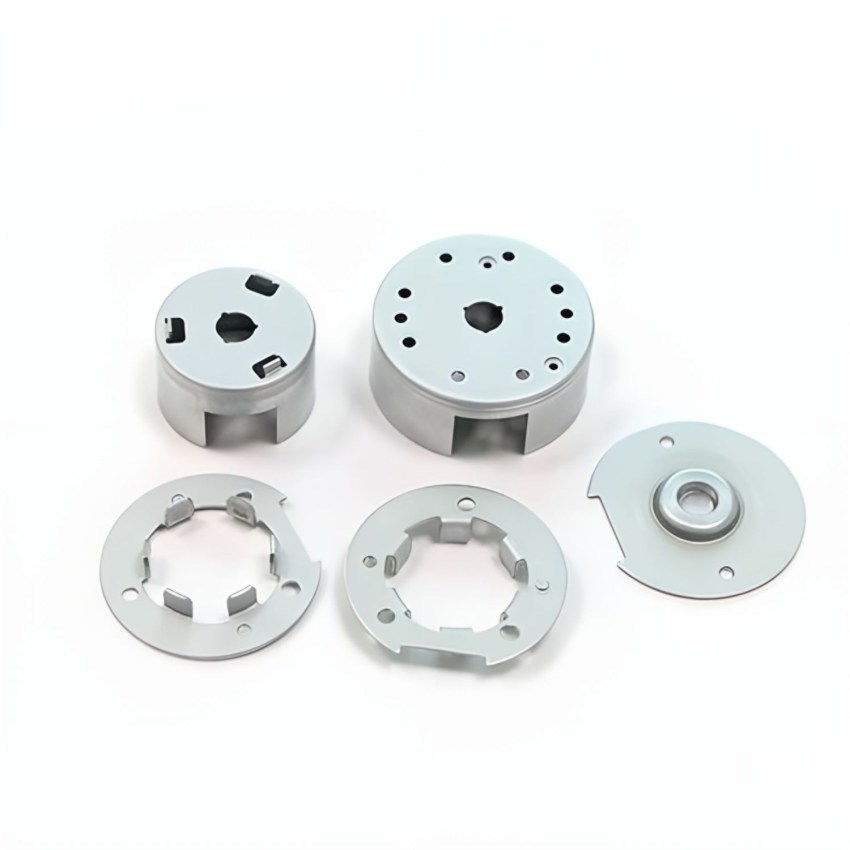What You Need to Know About Ultra Precision Machining Techniques
Release time:
2025-01-20
What You Need to Know About Ultra Precision Machining Techniques Table of Contents 1. Introduction to Ultra Precision Machining 2. Defining Ultra Precision Machining 3. Importance of Ultra Precision Machining in Manufacturing 4. Key Techniques in Ultra Precision Machining 4.1 Diamond Machining 4.2 Electrochemical Machining (ECM) 4.3 Laser Machining 4.4 Ultraso

What You Need to Know About Ultra Precision Machining Techniques
Table of Contents
- 1. Introduction to Ultra Precision Machining
- 2. Defining Ultra Precision Machining
- 3. Importance of Ultra Precision Machining in Manufacturing
- 4. Key Techniques in Ultra Precision Machining
- 4.1 Diamond Machining
- 4.2 Electrochemical Machining (ECM)
- 4.3 Laser Machining
- 4.4 Ultrasonic Machining
- 5. Applications of Ultra Precision Machining Techniques
- 6. Challenges in Ultra Precision Machining
- 7. Future Trends in Ultra Precision Machining
- 8. Conclusion
- 9. Frequently Asked Questions
1. Introduction to Ultra Precision Machining
In the modern era of manufacturing, the demand for precision has skyrocketed. **Ultra precision machining** has emerged as a vital process to meet this requirement, offering solutions that enhance the accuracy and quality of machined components. This article delves into the intricacies of ultra precision machining, aiming to provide a thorough understanding of its techniques, applications, challenges, and future trends.
2. Defining Ultra Precision Machining
Ultra precision machining refers to advanced manufacturing techniques that achieve extremely tight tolerances, often in the micrometer range. This level of precision involves **cutting, grinding, and polishing** materials to dimensions that ensure optimal performance in various applications. Ultra precision processes are crucial in industries where even the slightest deviation can lead to significant failures, such as aerospace, medical devices, and electronics.
3. Importance of Ultra Precision Machining in Manufacturing
The significance of ultra precision machining cannot be overstated. As industries evolve and the demand for high-performance components increases, manufacturers must adopt these techniques to ensure their products meet stringent quality standards. Some of the key benefits include:
- **Improved Component Performance**: With tighter tolerances, components operate more efficiently and reliably.
- **Reduced Waste**: High precision reduces the likelihood of defects, minimizing material waste and lowering production costs.
- **Enhanced Product Lifespan**: Components manufactured with ultra precision techniques tend to have longer service lives due to their superior fit and function.
- **Competitive Advantage**: Companies that invest in ultra precision machining can differentiate themselves in a crowded market.
4. Key Techniques in Ultra Precision Machining
Several techniques are employed in ultra precision machining, each designed for specific applications and materials. Below, we explore some of the most prominent methods used in the industry today.
4.1 Diamond Machining
**Diamond machining** is a cutting-edge process that utilizes diamond-tipped tools to achieve exceptional surface finishes and tight tolerances. This technique is particularly effective for materials that are difficult to machine, such as ceramics and some metals. The benefits of diamond machining include:
- **Superior Surface Finish**: Achieves nanometer-level finishes, essential for optical components.
- **Longevity of Tools**: Diamond tools are incredibly durable, reducing the frequency of tool changes and downtime.
4.2 Electrochemical Machining (ECM)
ECM is a non-traditional machining process that removes material through electrochemical reactions. It is particularly useful for machining complex geometries and hard materials. Key advantages of ECM include:
- **No Mechanical Stress**: Since the process does not involve physical contact, it eliminates issues like tool wear or material distortion.
- **High Precision**: Capable of producing intricate shapes with high accuracy, making it ideal for components like turbine blades and medical implants.
4.3 Laser Machining
**Laser machining** utilizes focused laser beams to cut, engrave, or drill materials. This technique is known for its versatility and speed. Advantages of laser machining include:
- **High Speed and Efficiency**: Lasers can operate at high speeds, increasing productivity.
- **Minimal Heat Affected Zone**: Reduces thermal effects on materials, preserving their properties.
4.4 Ultrasonic Machining
Utilizing high-frequency ultrasonic vibrations, this method removes material through a combination of mechanical and abrasive action. It is suitable for hard and brittle materials. Benefits include:
- **Ability to Machine Complex Geometries**: Ultrasonic machining excels in creating intricate shapes that traditional methods may struggle with.
- **No Heat Generation**: The process minimizes heat buildup, preserving material integrity.
5. Applications of Ultra Precision Machining Techniques
Ultra precision machining techniques are employed across various industries, including:
- **Aerospace**: Components such as turbine blades, fuel injectors, and structural elements require the utmost precision for safety and performance.
- **Medical Devices**: Surgical instruments and implants demand high-quality manufacturing to ensure patient safety and device efficacy.
- **Electronics**: Circuit boards and semiconductor components benefit from ultra precision to ensure functionality and reliability.
- **Optics**: Lenses and mirrors require exceptional surface finishes for optimal light transmission and clarity.
6. Challenges in Ultra Precision Machining
Despite its many advantages, ultra precision machining faces several challenges:
- **High Initial Costs**: The investment in advanced machinery and technology can be significant, making it a barrier for some companies.
- **Skill Requirements**: Operating ultra precision equipment requires specialized training and expertise.
- **Material Limitations**: Not all materials are suitable for ultra precision techniques, limiting options for some applications.
7. Future Trends in Ultra Precision Machining
As technology continues to advance, the field of ultra precision machining is expected to evolve. Some anticipated trends include:
- **Integration of AI and Machine Learning**: Leveraging data analytics to optimize machining processes and predictive maintenance.
- **Increased Automation**: The rise of robotics to enhance precision and efficiency in manufacturing environments.
- **Sustainability Initiatives**: Focus on reducing waste and energy consumption in machining processes.
8. Conclusion
Ultra precision machining is a vital component of modern manufacturing, allowing industries to produce high-quality components with unmatched accuracy. As technology progresses, so too will the techniques and applications of ultra precision machining, paving the way for innovations that will shape the future of manufacturing. By understanding these advanced processes, manufacturers can position themselves to meet the demands of an increasingly competitive market.
9. Frequently Asked Questions
1. What materials can be processed using ultra precision machining?
Ultra precision machining can be applied to various materials, including metals, ceramics, glass, and plastics. The choice of technique often depends on the specific material properties and application requirements.
2. How does ultra precision machining differ from traditional machining?
While traditional machining tends to focus on broader tolerances and is often more mechanical in nature, ultra precision machining emphasizes extremely tight tolerances and surface finishes using advanced technologies.
3. What industries benefit the most from ultra precision machining?
Industries such as aerospace, medical devices, electronics, and optics are among the primary beneficiaries, as they require components with high levels of accuracy and reliability.
4. Are there any risks associated with ultra precision machining?
The main risks include high initial costs, the need for specialized training, and potential limitations with certain materials. However, the benefits often outweigh these challenges.
5. What role does technology play in ultra precision machining?
Technology is at the heart of ultra precision machining, from advanced cutting tools and machinery to software that optimizes processes and enhances precision.
By understanding these aspects of ultra precision machining, organizations can harness its potential to improve product quality and operational efficiency, ensuring they remain competitive in a rapidly evolving manufacturing landscape.
Key words:




